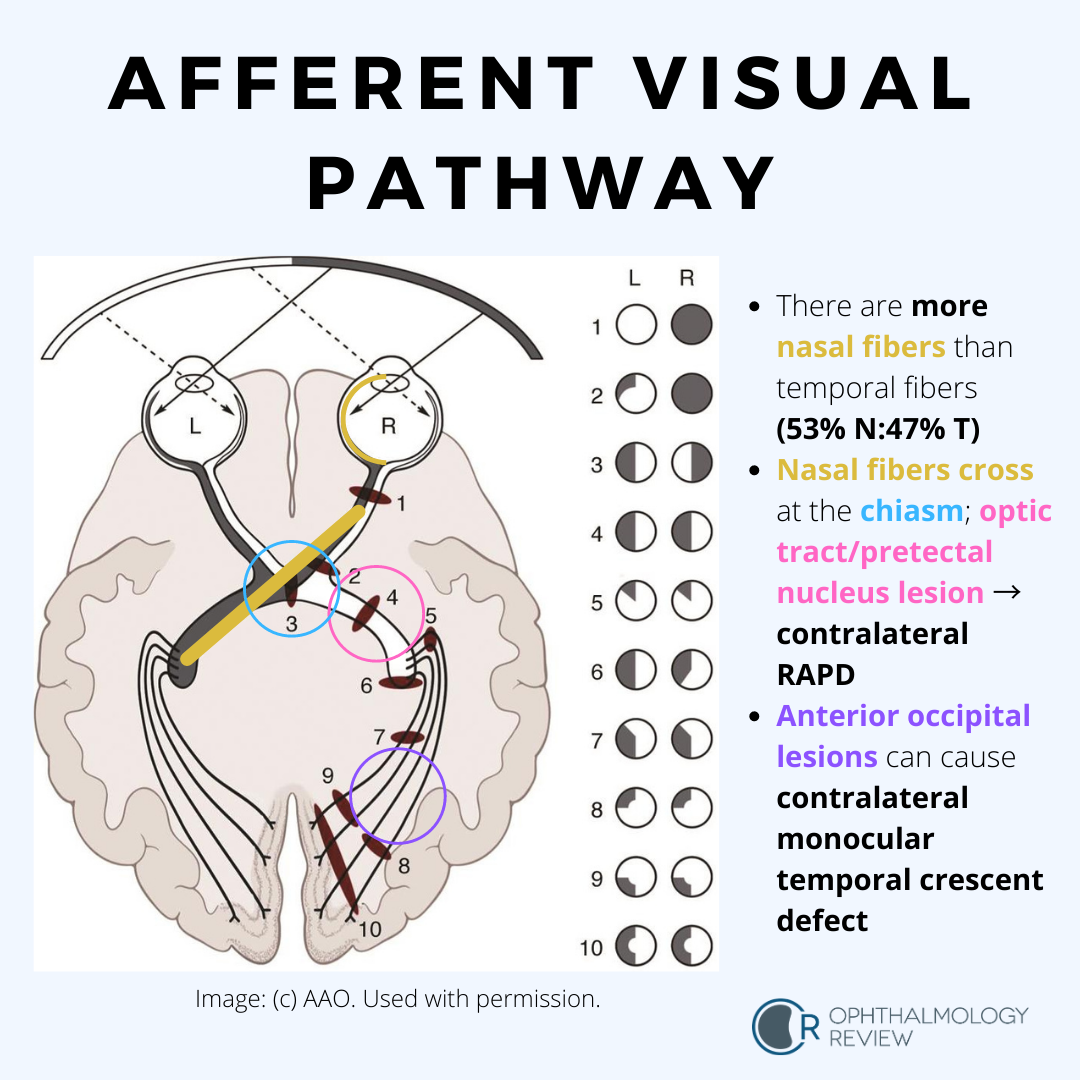The CN3 Nuclear Complex
The CN3 nuclear complex has some unique features that can help you localize partial CN3 palsies to the brainstem.
The Oculosympathetic Pathway
The Afferent Visual Pathway
Ciliary Ganglion
The ciliary ganglion serves as the site of synapse for the parasympathetic nerves innervating the eye. Because of the many nerves that course through it (not all of them synapse!) and its anatomical location, this structure is of importance in learning the basics of ophthalmology. According to the Basic and Clinical Science Course, it is located lateral to the ophthalmic artery, situated between optic nerve and lateral rectus muscle, approximately 1 cm (10 mm) anterior to the annulus of Zinn and 1.5-2 cm (15-20 mm) posterior to the globe (1-5).
Fetal Alcohol Syndrome
In light of the Centers for Disease Control's very broad statements about alcohol use in women, perhaps this topic is somewhat appropriate. Like I alluded to in the OKAP review article on embryology, there are many ocular findings associated with fetal alcohol syndrome, which are important to know, both for clinical recognition, and also for ongoing monitoring. For further reference, the CDC has a pretty useful web portal on fetal alcohol spectrum disorders.
Embryologic Development Of The Eye
Truth be told, there is not very much detail that needs to be learned about embryology; after all, we've already learned embryology in medical school. At the same time, there are some key embryology concepts that are very helpful to understanding ocular disease, and may also show up on test questions. There usually seems to be at least one question that addresses embryology, and there are tons of practice questions that test your knowledge of embryology.
Aniridia
As you can probably tell, I'm starting to skip around a little bit while I put together these OKAP review articles. I have a fairly large list of topics to cover, but hopefully these will all be helpful pieces of information. I decided to skip to aniridia, because it is one of those conditions that seems to be very popular in practice questions.
Reading the BCSC: Fundamentals and Principles of Ophthalmology, Chapter 1
The BCSC Section 2, Fundamentals and Principles of Ophthalmology, provides an extremely detailed overview of the anatomy and physiology of the eye. Organizationally, it lays out the “fundamentals” of learning about the eye so that by the end of reading this book, you should be able to understand the anatomical structure of the eye, eye genetics, embryology, growth, and development, physiology of the eye, and medications that are used to treat eye conditions.
For this reason, this book is typically suggested as the first book to read for first-year ophthalmology residents. Please see the articles Reading The BCSC and OKAPs Reading Schedule to learn how to pace yourself through learning the material.




